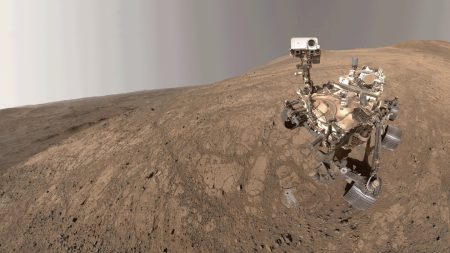Deep beneath a granite hill in Kaiping, China, lies a scientific marvel nearing completion: the Jiangmen Underground Neutrino Observatory (JUNO). This massive detector, a colossal orb submerged in purified water and housed within a cavern 700 meters underground, is poised to unlock the secrets of neutrinos, elusive ghost particles that hold clues to the universe’s origins and evolution. JUNO joins two other ambitious neutrino detectors currently under construction, one in Japan (Hyper-Kamiokande) and the other in the United States (Deep Underground Neutrino Experiment), forming a global triad dedicated to unraveling the mysteries of these fundamental particles. This collaborative effort represents a significant leap forward in neutrino research, promising to deliver unprecedented insights into the nature of these elusive particles and their role in the cosmos.
Neutrinos, though ubiquitous – trillions pass through our bodies every second – are notoriously difficult to detect. Born from the Big Bang, these subatomic particles are also produced by stars, nuclear reactions, and particle accelerators. Their incredibly small mass and lack of electrical charge allow them to interact very weakly with matter, making them virtually invisible to conventional detectors. Despite being discovered almost a century ago, neutrinos remain enigmatic, their properties and behavior still largely unknown. This inherent elusiveness is what makes JUNO and its counterparts such groundbreaking endeavors. They represent a new generation of neutrino detectors, pushing the boundaries of technology to capture the faintest whispers of these ghostly particles.
The challenge in detecting neutrinos lies in their infrequent interactions with other matter. Since neutrinos rarely collide with other particles, scientists must build enormous detectors to increase the probability of capturing these rare events. JUNO, with its massive scale and sophisticated design, tackles this challenge head-on. The detector’s core component is a 20,000-ton sphere filled with a special liquid scintillator. When a neutrino interacts with an atom within the scintillator, it produces a tiny flash of light, which is then detected by thousands of highly sensitive photomultiplier tubes lining the detector’s walls. This meticulously engineered setup allows JUNO to detect even the faintest neutrino interactions, providing valuable data for scientific analysis.
JUNO’s strategic location deep underground serves a crucial purpose: shielding the detector from cosmic rays and other background radiation that could mimic neutrino signals. This subterranean isolation ensures that the detected signals are indeed from neutrinos, enabling scientists to accurately study their properties. The detector’s primary focus is on antineutrinos, the antimatter counterparts of neutrinos, produced by nearby nuclear power plants. By analyzing the energy and flavor oscillations of these antineutrinos – the phenomenon where neutrinos change between three distinct types as they travel – JUNO aims to determine the mass hierarchy of neutrinos, a fundamental question in particle physics. This information will be crucial in refining our understanding of neutrino behavior and its implications for cosmology and astrophysics.
The intricate design of JUNO and the challenges it addresses highlight the complexity of neutrino research. Detecting these elusive particles requires not only massive infrastructure but also innovative techniques to distinguish genuine neutrino signals from background noise. The daring pursuit of neutrino mass hierarchy underscores the ambition of the JUNO project. Successfully measuring these subtle shifts in neutrino flavor will provide crucial insights into their nature and contribute significantly to our understanding of the universe’s fundamental building blocks. The data collected by JUNO, in conjunction with data from Hyper-Kamiokande and the Deep Underground Neutrino Experiment, will provide a comprehensive and cross-validated picture of neutrino behavior, enhancing the reliability and significance of the findings.
While the detection of neutrinos presents formidable technical challenges, the potential scientific payoff is immense. Neutrinos, being relics of the Big Bang, offer a unique window into the early universe. By studying their properties and behavior, scientists can glean valuable information about the universe’s formation, evolution, and composition. Furthermore, neutrinos may hold the key to understanding the matter-antimatter asymmetry, a fundamental puzzle in cosmology. The dominance of matter over antimatter in the observable universe is a profound mystery, and neutrinos, with their unique properties, may provide crucial clues to explain this imbalance. The combined efforts of JUNO and its international counterparts promise to unveil the secrets of these enigmatic particles, ultimately enriching our comprehension of the universe and its fundamental laws.










